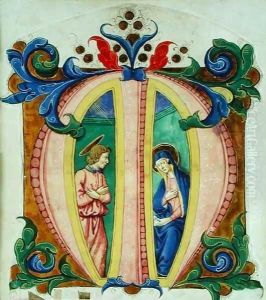Antonio di Niccolo di Lorenzo Paintings
Antonio di Niccolò di Lorenzo, better known as Antonio del Pollaiuolo, or Pollaiolo, was an influential Italian painter, sculptor, engraver, and goldsmith during the Renaissance. Born in Florence in 1433, he was deeply involved in the innovative artistic developments that characterized the Quattrocento period in Italy.
Antonio was born into a family of artisans; his father was a poulterer (from which the artist's nickname 'Pollaiuolo' derives), and his brother, Piero, was also an artist with whom he often collaborated. Antonio initially trained as a goldsmith and metalworker under Bartoluccio di Michele, where he honed his skills in working with fine detail and design - skills which he would later apply to his works in other mediums.
As a painter, Pollaiuolo was known for his meticulous attention to anatomy and the human form, which he studied with almost scientific precision. This interest in human anatomy is exemplified in his paintings, where the bodies are often depicted in dynamic poses, with a strong sense of movement and muscularity. One of his most famous works is the 'Martyrdom of Saint Sebastian,' which showcases his knowledge of human anatomy and his skill in composition.
Pollaiuolo was also one of the first Italian artists to use engraving as a form of art, contributing to the development of printmaking in the Renaissance. His engravings, characterized by their clear lines and dynamic compositions, helped disseminate his and other artists' designs across Europe.
Apart from painting and engraving, Antonio also created significant works of sculpture, including the bronze tomb for Pope Sixtus IV's nephews in St. Peter's Basilica in Rome. This work illustrates his ability to translate his understanding of the human form into three dimensions.
Pollaiuolo's influence extended beyond his lifetime, as his emphasis on detailed anatomy and the use of nudes in dynamic poses became important elements in the work of later Renaissance artists. He passed away in Rome in 1523, leaving behind a legacy of art that exemplifies the Renaissance fascination with the human form, nature, and classical antiquity.
